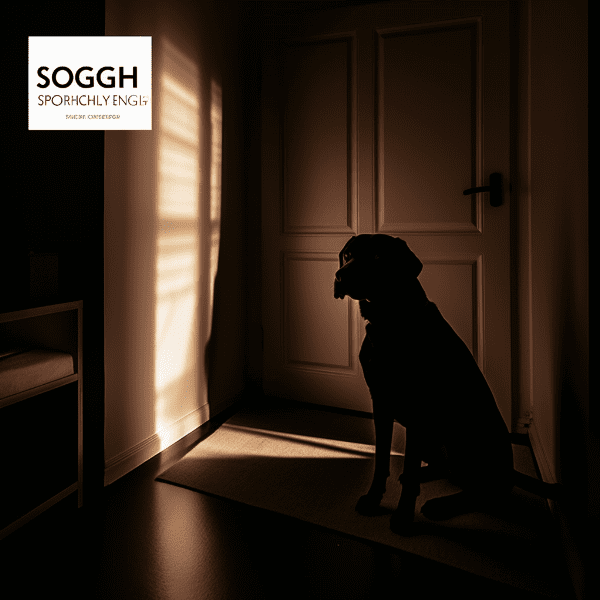Table of Contents
- Understanding Separation Anxiety in Dogs
- Signs and Symptoms of Severe Separation Anxiety
- Factors That Contribute to Separation Anxiety
- Diagnosing Severe Separation Anxiety in Dogs
- Creating a Management Plan for Your Dog
- Techniques to Help Your Dog Cope with Separation
- Desensitization and Counterconditioning
- Medications for Severe Separation Anxiety
- Seeking Professional Help for Your Dog
- Preventing Separation Anxiety in Dogs
Understanding Separation Anxiety in Dogs
Separation anxiety is a common behavioral issue in dogs, especially when they are left alone for extended periods. Dogs are social animals, and being separated from their owners can be distressing for them. Separation anxiety can manifest in various ways, such as barking, whining, destructiveness, and self-harm.
The Root Cause of Separation Anxiety
The exact cause of separation anxiety is not fully understood, but it’s believed to be a combination of factors. Genetics, early life experiences, and environmental factors such as a change in routine or a move to a new home can contribute to the development of separation anxiety. Dogs that have been abandoned or surrendered to shelters may also be at a higher risk of developing separation anxiety.
Separation Anxiety vs. Normal Behaviors
It’s important to note that not all behaviors exhibited by a dog when left alone are due to separation anxiety. Some dogs may display normal behaviors such as sleeping, chewing on toys, or simply resting. Separation anxiety behaviors are usually more extreme and occur when the dog is left alone or separated from their owner.
Age and Breed as Risk Factors
Certain dog breeds, such as retrievers and spaniels, are more prone to separation anxiety than others. Additionally, puppies and older dogs may be more susceptible to separation anxiety due to their increased dependence on their owners.
Separation Anxiety and Other Behavioral Issues
Separation anxiety can also lead to other behavioral issues, such as aggression and fear. A dog with separation anxiety may become fearful of being left alone and may try to escape or become destructive. These behaviors can be dangerous for both the dog and their owner, and it’s important to address them as soon as possible.
Understanding the root causes of separation anxiety and differentiating it from normal behaviors can help in developing a management plan for your dog. In the following sections, we will discuss the signs and symptoms of severe separation anxiety, as well as techniques to help your dog cope with separation.

Signs and Symptoms of Severe Separation Anxiety
Dogs with separation anxiety exhibit a range of behaviors when left alone or separated from their owners. Some of the common signs and symptoms of Severe separation anxiety in dogs are as follows:
Vocalization
Dogs with separation anxiety may whine, bark, or howl when left alone. This behavior is usually persistent and can occur for extended periods. Neighbors may report hearing the dog vocalizing excessively while the owner is away.
Destructiveness
Dogs with severe separation anxiety may become destructive when left alone. They may chew on furniture, doors, or windows in an attempt to escape or simply due to anxiety. This behavior can lead to serious damage to the home and pose a risk to the dog’s safety.
Elimination
Dogs with separation anxiety may urinate or defecate indoors when left alone. This behavior is usually due to anxiety and can be a distressing experience for the dog. The dog may also try to eat their own waste, which can lead to health issues.
Physical Symptoms
Severe separation anxiety can cause physical symptoms in dogs, such as drooling, panting, trembling, and pacing. These symptoms are usually signs of distress and can indicate that the dog is not coping well with being left alone.
Escape Attempts
Dogs with separation anxiety may try to escape from their home when left alone. They may try to dig or chew through doors or windows or jump over fences. This behavior can be dangerous for the dog and may result in injury or getting lost.
It’s important to note that not all dogs with separation anxiety exhibit all of these symptoms. Some dogs may display only one or two of these behaviors, while others may exhibit all of them. It’s important to observe your dog’s behavior and note any changes or patterns. In the following sections, we will discuss the factors that contribute to separation anxiety and how to diagnose it in dogs.

Factors That Contribute to Separation Anxiety
Separation anxiety in dogs can develop due to a variety of factors. Identifying these factors can help in developing a management plan to alleviate the dog’s anxiety.
Early Life Experiences
Dogs that have experienced traumatic events in their early life, such as abandonment, neglect, or abuse, may be more susceptible to separation anxiety. These experiences can leave a lasting impact on the dog’s behavior and make them more anxious and fearful.
Lack of Socialization
Dogs that have not been properly socialized may be more prone to separation anxiety. Socialization involves exposing the dog to various people, places, and situations during their early development. Dogs that have not been socialized may be more anxious and fearful when exposed to new environments and experiences.
Change in Routine
A change in routine, such as a new work schedule or a move to a new home, can be a trigger for separation anxiety in dogs. Dogs thrive on routine and familiarity, and any disruption to their routine can cause stress and anxiety.
Breed Predisposition
Certain breeds of dogs are more prone to separation anxiety than others. For example, breeds that are bred for companionship, such as toy breeds, may be more susceptible to separation anxiety. Additionally, dogs that have a strong bond with their owners may be more prone to separation anxiety.
Lack of Exercise and Stimulation
Dogs that do not receive enough exercise and mental stimulation may be more prone to separation anxiety. Exercise and mental stimulation help to reduce stress and anxiety in dogs and promote overall well-being.
Identifying the factors that contribute to separation anxiety in dogs can help in developing a management plan to alleviate the dog’s anxiety. In the next section, we will discuss how to diagnose severe separation anxiety in dogs.

Diagnosing Severe Separation Anxiety in Dogs
Diagnosing separation anxiety in dogs can be challenging as the symptoms can be similar to other behavioral issues. However, a proper diagnosis is essential in developing an effective management plan.
Veterinary Examination
The first step in diagnosing separation anxiety is to rule out any medical conditions that may be causing the behavior. A veterinary examination can help to identify any underlying medical issues that may be contributing to the dog’s anxiety.
Behavioral Assessment
A behavioral assessment by a professional dog trainer or behaviorist can help to identify any behavioral issues and their underlying causes. The assessment may involve observing the dog’s behavior when left alone and analyzing their response to various stimuli.
Owner Interview
An interview with the dog’s owner can provide valuable information about the dog’s behavior and any changes in their routine or environment that may be contributing to their anxiety. The owner can also provide information about the dog’s early life experiences and socialization.
Diagnostic Criteria
The diagnosis of separation anxiety in dogs is based on specific diagnostic criteria. These criteria include the presence of two or more behavioral signs of anxiety when the dog is separated from their owner or left alone, the signs must occur consistently for at least three months, and the signs must be severe enough to disrupt the dog’s normal routine and cause distress.
Diagnosing separation anxiety in dogs is essential in developing an effective management plan. In the following sections, we will discuss how to create a management plan for your dog and techniques to help your dog cope with separation.

Creating a Management Plan for Your Dog
Managing severe separation anxiety in dogs involves a combination of techniques, such as behavior modification, environmental changes, and medication. Creating a management plan for your dog can help to alleviate their anxiety and improve their overall well-being.
Environmental Changes
Environmental changes can help to reduce the dog’s anxiety and make their surroundings more comfortable. This may involve creating a safe space for the dog, such as a crate or a designated room, providing interactive toys and puzzles, and playing calming music or white noise.
Consistency and Routine
Consistency and routine are essential in managing severe separation anxiety in dogs. Establishing a consistent routine for feeding, exercise, and playtime can help to reduce the dog’s anxiety and provide them with a sense of security.
Professional Help
Creating a management plan for your dog involves a combination of techniques and requires patience and consistency. In the following sections, we will discuss techniques to help your dog cope with separation and how to prevent separation anxiety in dogs.
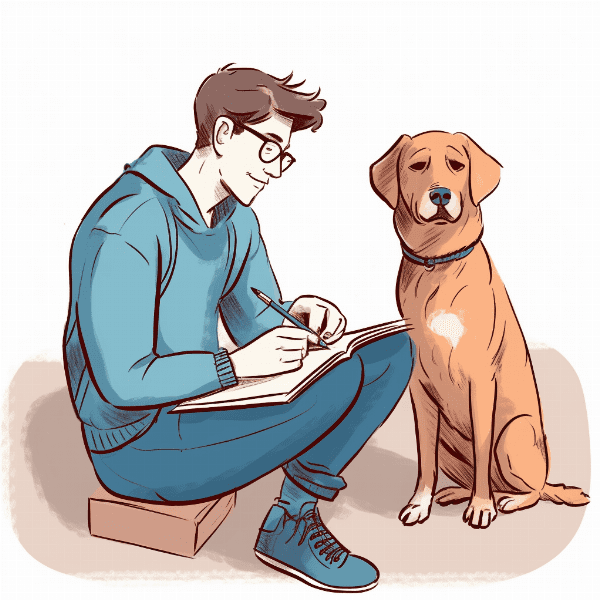
Techniques to Help Your Dog Cope with Separation
Positive Reinforcement
Positive reinforcement involves rewarding the dog for calm behavior and ignoring anxious behavior. This technique helps to reinforce the dog’s positive behavior and reduce their anxiety.
Interactive Toys and Puzzles
Interactive toys and puzzles can help to keep the dog occupied and reduce their anxiety when left alone. These toys provide mental stimulation and can help to alleviate boredom and stress.
Calming Music or White Noise
Playing calming music or white noise can help to reduce the dog’s anxiety and create a relaxing environment. This technique can also help to drown out external noises that may trigger the dog’s anxiety.
Exercise and Mental Stimulation
Regular exercise and mental stimulation can help to reduce the dog’s anxiety and improve their overall well-being. Exercise helps to reduce stress and anxiety, while mental stimulation provides a sense of satisfaction and fulfillment.
Calming Products
Calming products such as pheromone sprays, collars, and diffusers can help to reduce the dog’s anxiety and promote relaxation. These products mimic natural calming signals and can help to create a sense of security for the dog.
Crate Training
Crate training can help to create a safe space for the dog and provide them with a sense of security. Proper crate training involves gradually introducing the dog to the crate and providing positive reinforcement.
These techniques can help your dog cope with separation and reduce their anxiety. However, it’s important to note that not all techniques may work for every dog, and a combination of techniques may be necessary. In the following section, we will discuss how to prevent separation anxiety in dogs.
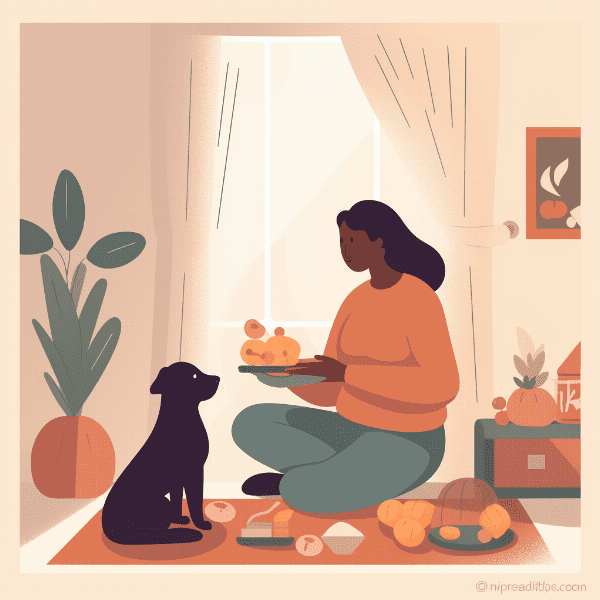
Desensitization and Counterconditioning
Desensitization and counterconditioning are behavior modification techniques that can help to reduce a dog’s anxiety and improve their coping skills. These techniques involve gradually exposing the dog to the stimuli that trigger their anxiety while providing positive reinforcement.
Desensitization
Desensitization involves gradually exposing the dog to the stimuli that trigger their anxiety while providing positive reinforcement. This technique helps the dog to become desensitized to the stimuli and reduces their anxiety.
Counterconditioning
Counterconditioning involves changing the dog’s emotional response to the stimuli that trigger their anxiety. This technique involves pairing the stimuli with a positive experience, such as treats or playtime, to create a positive association.
For example, if the dog becomes anxious when the owner leaves the house, the counterconditioning process would involve pairing the act of leaving with a positive experience, such as treats or playtime.
Combination of Techniques
Desensitization and counterconditioning are often used together to create a comprehensive behavior modification plan. This combination helps the dog to develop coping skills and create positive associations with the stimuli that trigger their anxiety.
It’s important to note that desensitization and counterconditioning require patience and consistency. It’s also important to start with small steps and gradually increase the level of exposure to the stimuli.
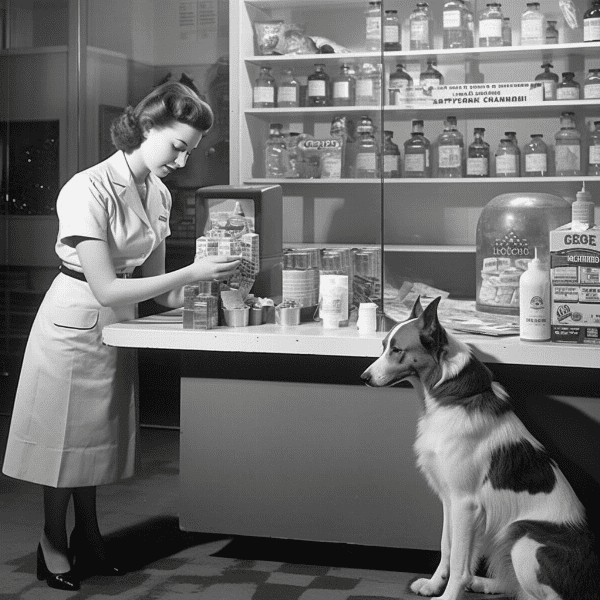
Medications for Severe Separation Anxiety
In severe cases, medication may be necessary to help manage a dog’s separation anxiety. Medications such as antidepressants, anxiolytics, and sedatives can help to reduce the dog’s anxiety and improve their behavior. However, medication should always be prescribed and monitored by a veterinarian.
Antidepressants
Antidepressants are medications that help to regulate the levels of neurotransmitters in the brain, such as serotonin and dopamine. These medications can help to reduce the dog’s anxiety and improve their behavior.
Anxiolytics
Anxiolytics are medications that help to reduce anxiety in dogs. These medications can help to calm the dog and reduce their anxiety when left alone. Anxiolytics are often used in combination with behavior modification techniques.
Sedatives
Sedatives are medications that help to calm the dog and promote relaxation. These medications are often used for short-term situations, such as travel or a visit to the veterinarian. However, sedatives can also be used for severe separation anxiety.
It’s important to note that medication should always be prescribed and monitored by a veterinarian. The veterinarian will determine the appropriate medication and dosage for the dog based on their individual needs and medical history.
In addition to medication, there are other techniques that can help to manage severe separation anxiety in dogs. In the following section, we will discuss seeking professional help for your dog.
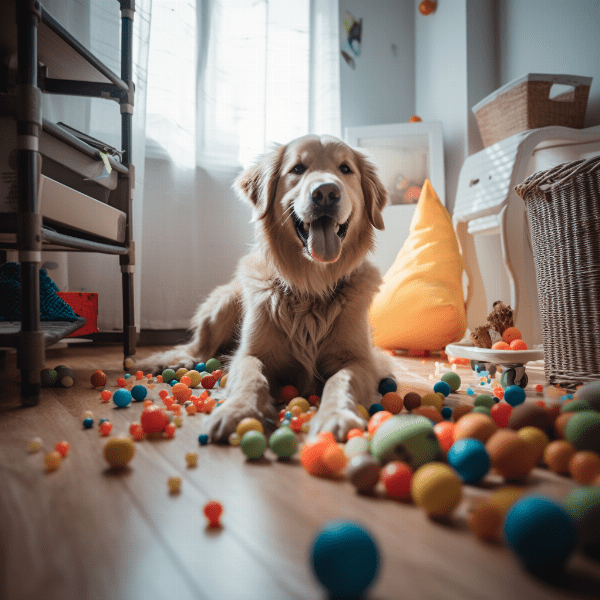
Seeking Professional Help for Your Dog
If your dog is experiencing severe separation anxiety, seeking professional help from a veterinary behaviorist or certified dog trainer may be necessary. These professionals can provide guidance and support in developing a management plan for your dog and implementing behavior modification techniques.
Veterinary Behaviorist
A veterinary behaviorist is a veterinarian with specialized training in animal behavior. These professionals can provide a comprehensive assessment of your dog’s behavior and develop a customized management plan to address their separation anxiety. They may also prescribe medication and monitor the dog’s progress.
Certified Dog Trainer
A certified dog trainer can provide guidance and support in implementing behavior modification techniques. These professionals can teach you how to train your dog and provide support and guidance throughout the process.
Group Classes
Group classes can also be beneficial for dogs with separation anxiety. These classes provide socialization opportunities and can help to improve the dog’s overall behavior and well-being.
It’s important to note that not all professionals are created equal, and it’s important to research and choose a reputable professional. Look for professionals with experience and credentials in animal behavior and positive reinforcement training.
In conclusion, severe separation anxiety in dogs can be a challenging issue to manage. However, with patience, consistency, and a comprehensive management plan, the dog’s anxiety can be reduced, and their overall well-being can be improved. If you suspect that your dog is experiencing severe separation anxiety, seeking professional help from a veterinarian or certified dog trainer is highly recommended.

Preventing Separation Anxiety in Dogs
Preventing separation anxiety in dogs involves early socialization, positive reinforcement training, and creating a comfortable and predictable environment for the dog.
Early Socialization
Early socialization is essential in preventing separation anxiety in dogs. Socialization should begin during the puppy stage and involve exposure to a variety of people, animals, and environments. This helps to create a well-adjusted dog that is less likely to experience anxiety.
Positive Reinforcement Training
Positive reinforcement training involves rewarding the dog for positive behavior and ignoring negative behavior. This type of training creates a positive association with training and helps to reinforce positive behavior. This type of training is more effective than punishment-based training, which can create anxiety and stress.
Predictable Routine
Creating a predictable routine for the dog can help to reduce their anxiety and provide them with a sense of security. This involves establishing a consistent routine for feeding, exercise, and playtime. It’s also important to provide a comfortable and safe environment for the dog.
Gradual Separation
Gradual separation can also be used to prevent separation anxiety in dogs. This involves gradually exposing the dog to periods of separation while providing positive reinforcement. This helps the dog to develop coping skills and reduces their likelihood of experiencing anxiety.
Avoid Punishment-Based Training
Avoiding punishment-based training is also important in preventing separation anxiety in dogs. Punishment-based training can create anxiety and stress, and may lead to negative behavior.
In conclusion, preventing separation anxiety in dogs involves early socialization, positive reinforcement training, creating a predictable routine, and avoiding punishment-based training. By following these guidelines, you can help to prevent separation anxiety in your dog and provide them with a happy and healthy life.




